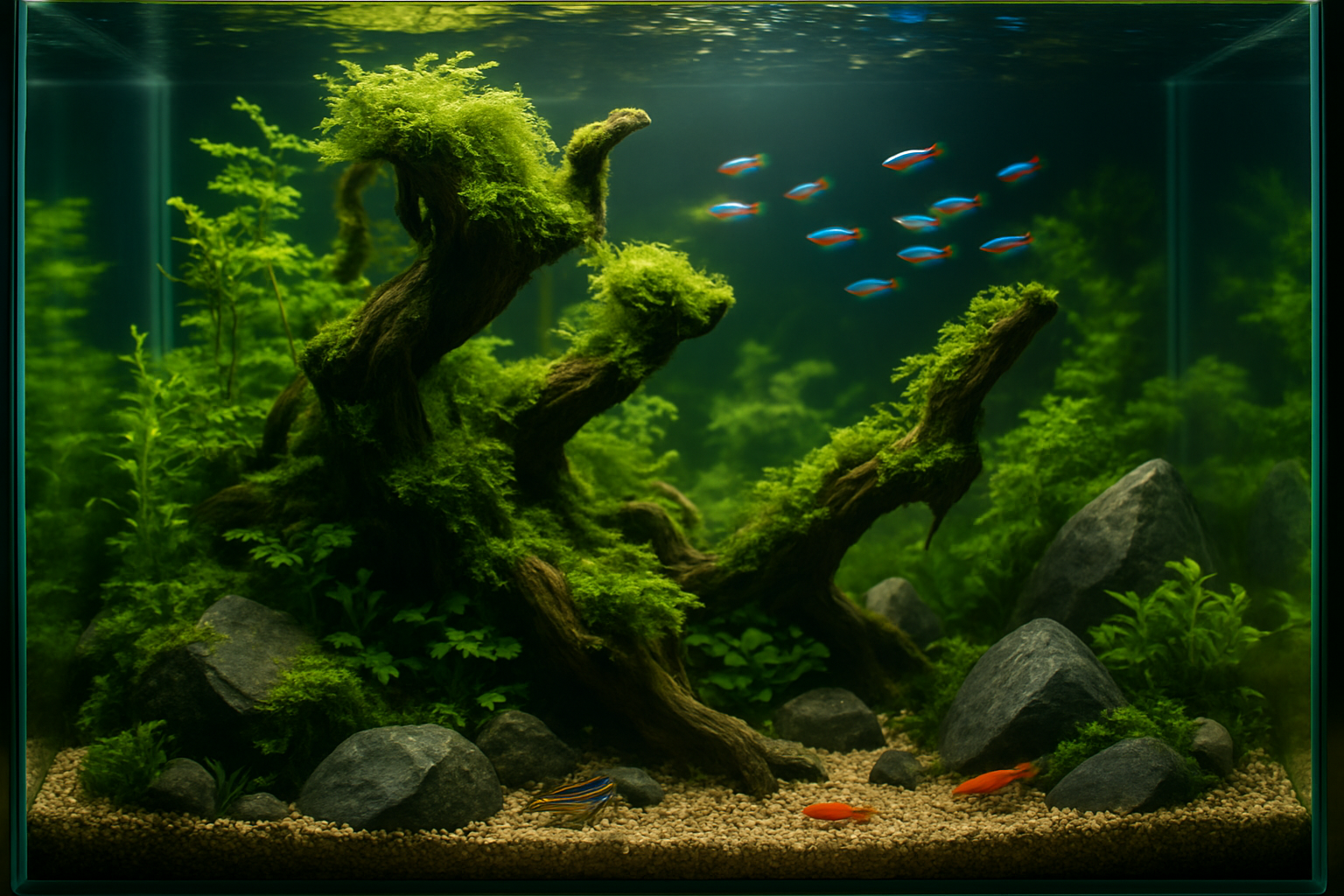Aquascaping: The Art of Underwater Landscapes
Dive into the captivating world of aquascaping, where creativity meets aquatic ecosystems. This innovative hobby combines horticulture, design, and marine biology to create stunning underwater landscapes within aquariums. From lush green forests to dramatic rocky canyons, aquascaping transforms fish tanks into living works of art, offering a unique blend of aesthetics and ecological balance.

Styles and Techniques in Aquascaping
Aquascaping encompasses various styles, each with its own unique characteristics and challenges. The Dutch style, originating in the Netherlands, focuses on densely planted arrangements with a variety of colorful plant species. The Iwagumi style, inspired by Japanese rock gardens, uses carefully placed stones as the focal point, complemented by minimalist plantings. The jungle style aims to recreate lush, overgrown tropical environments, while the biotope style replicates specific natural habitats down to the smallest detail.
Essential Elements of a Successful Aquascape
Creating a thriving aquascape requires careful consideration of several key elements. Lighting plays a crucial role in plant growth and overall aesthetics, with advanced LED systems offering customizable spectrums and intensities. Substrate choice affects plant nutrition and anchoring, with specialized aquasoils providing optimal conditions for root development. Hardscape materials like driftwood, rocks, and pebbles form the backbone of the design, creating depth and structure. CO2 injection systems enhance plant growth, allowing for more demanding species and lush layouts.
Plant Selection and Care in Aquascaping
The heart of any aquascape lies in its plant selection. Aquatic plants come in a wide variety of shapes, sizes, and colors, each with specific care requirements. Foreground plants like Hemianthus callitrichoides create lush carpets, while stem plants such as Rotala rotundifolia add height and color. Slow-growing epiphytes like Anubias and Bucephalandra offer texture and interest to hardscape elements. Successful aquascapers must balance aesthetics with the ecological needs of their chosen plants, considering factors such as light requirements, nutrient demands, and growth rates.
The Role of Fish and Invertebrates
While plants and hardscape form the foundation of an aquascape, fish and invertebrates bring it to life. Choosing the right inhabitants is crucial for both the visual appeal and ecological balance of the aquarium. Schooling fish like neon tetras or rasboras add movement and color, while bottom-dwelling species like Corydoras catfish contribute to the overall ecosystem. Shrimp and snails serve as natural cleanup crews, helping to maintain water quality and control algae growth. The key is to select species that complement the aquascape’s style and scale while coexisting harmoniously.
Maintenance and Evolution of Aquascapes
Maintaining a thriving aquascape requires dedication and regular care. Weekly water changes, pruning, and fertilization are essential to keep plants healthy and prevent algae overgrowth. Many aquascapers view their creations as living canvases, continuously evolving over time. As plants grow and mature, the aquascape may require periodic redesigns or adjustments to maintain the desired aesthetic. This dynamic nature of aquascaping adds an exciting dimension to the hobby, allowing enthusiasts to refine their skills and explore new creative possibilities.
The Aquascaping Community and Competitions
The global aquascaping community has grown significantly in recent years, fueled by social media and online forums. Enthusiasts share techniques, showcase their creations, and offer support to newcomers. International competitions like the International Aquatic Plants Layout Contest (IAPLC) attract entries from around the world, pushing the boundaries of aquatic design. These events not only celebrate the artistry of aquascaping but also promote innovation and raise awareness about aquatic ecosystems.
The Future of Aquascaping
As technology advances and environmental awareness grows, aquascaping continues to evolve. New LED lighting systems, advanced filtration methods, and eco-friendly materials are expanding the possibilities for aquascape design. There’s also a growing emphasis on creating sustainable aquascapes that minimize resource consumption and environmental impact. Some aquascapers are exploring biotope-accurate setups that serve as educational tools, highlighting the importance of preserving natural aquatic habitats.
Conclusion
Aquascaping represents a unique intersection of art, science, and nature. It offers a creative outlet that brings the beauty of underwater worlds into our homes and offices. As the hobby continues to grow and evolve, it not only enhances our living spaces but also deepens our appreciation for the delicate balance of aquatic ecosystems. Whether you’re a seasoned aquarist or a curious newcomer, the world of aquascaping invites you to explore the endless possibilities of underwater landscape design.





